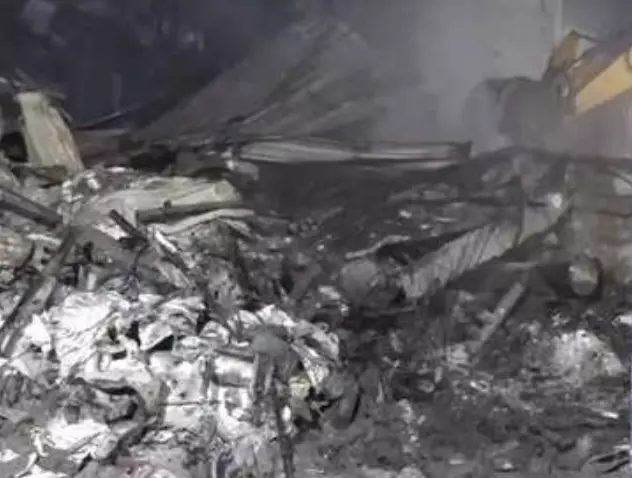Charred Bodies, Shattered Families Make Hospitals Most Harrowing
District health authorities, under the directions of health minister Damodar Raja Narsimha, dispatched forensic doctors to assist. The Forensic Science Laboratory (FSL) is overseeing DNA testing

Hyderabad: Rescue operations continued for the second consecutive day at Sigachi Industries Ltd’s pharma unit at Pashamylaram, as teams from fire services, SDRF, NDRF, and Singareni Collieries toiled through the debris. At least 14 bodies have been identified so far, while 22 remain unrecognisable, whose samples were sent for DNA profiling.
The Government Area Hospital at Patancheru has become a harrowing scene, with the family members, relatives or friends trying to identify their dear ones among the bodies which were charred beyond recognition.
In a corner of the hospital, the family of 50-year-old Ram Singh Rajbhar, a native of Devadiya village in Ballia district of Uttar Pradesh, broke down. Rajbhar had been working as an operator at the factory for over 35 years and lived near Isnapur X Road. His wife Usha Devi, three daughters, and son clung to one another in anguish.
His two younger daughters, Rinki and Pinky, currently studying in Intermediate and Degree colleges, had the harrowing task of identifying their father’s body. “This was one of the toughest things to do,” said Rinki. They recognised him through a half-burnt locket and a set of cycle keys.
His elder sister, who also works at the company in the administration wing, said, “The executive vice-chairman met me at 9:30 am and asked me to find out where my father was. I was in our office at Madinaguda — it took me an hour for me to reach the factory.”
The family rushed between Pranam Hospital, Archana Hospital, and Dhruva Hospital but they couldn’t find him.
“Around 2 pm, they sent us to the mortuary. He wasn’t there either. Again at 7 pm, they told us to go back,” she added. Around 9 pm, the police confirmed his identity and began the panchanama. “It was too difficult to transport the body home. So we decided to cremate him here itself.”
Sanju Devi, in her early twenties, stood silently among a row of bodies, trying to recognise her husband. With only a friend beside her and no clear communication from officials except that “we’re working on it,” she remained in limbo. “There’s no one here to help properly,” her friend whispered.
Among the dead was a newly married couple, Nikhil Kumar Reddy from Jammalamadugu and Ramya Sri from Rajamahendravaram. Both of them were employees at the factory, who fell in love, married two months ago. They were working in the early 7 am shift on the fateful day, hoping to leave early for a short outing. But the desire for the outing claimed their lives.
Most deceased were migrants from Uttar Pradesh, Bihar, Odisha and Andhra Pradesh. For many of them, communication with officials was almost impossible. “My sister-in-law was completely lost — she couldn’t understand anyone here,” said Sarvanth Kumar from Bihar, who gave his DNA sample to help identify his brother’s remains. “I had to come all the way from my home just to help her. Otherwise, she’d still be waiting in confusion.”
Authorities have promised that the bodies, who have been identified, will be handed to the families after the post-mortem. The government is offering Rs.1 lakh to each family for last rites. But it offered relief or hope for many people, who were waiting under trees or in hospital halls, clutching photographs and scraps of hope.
District health authorities, under the directions of health minister Damodar Raja Narsimha, dispatched forensic doctors to assist. The Forensic Science Laboratory (FSL) is overseeing DNA testing.
Confusion around the number of missing persons continues to persist. G. V. Narayana Rao, the director of fire services, said, “The company has not given an accurate worker count. More could be trapped. We’ll only know after the debris is fully cleared.”

